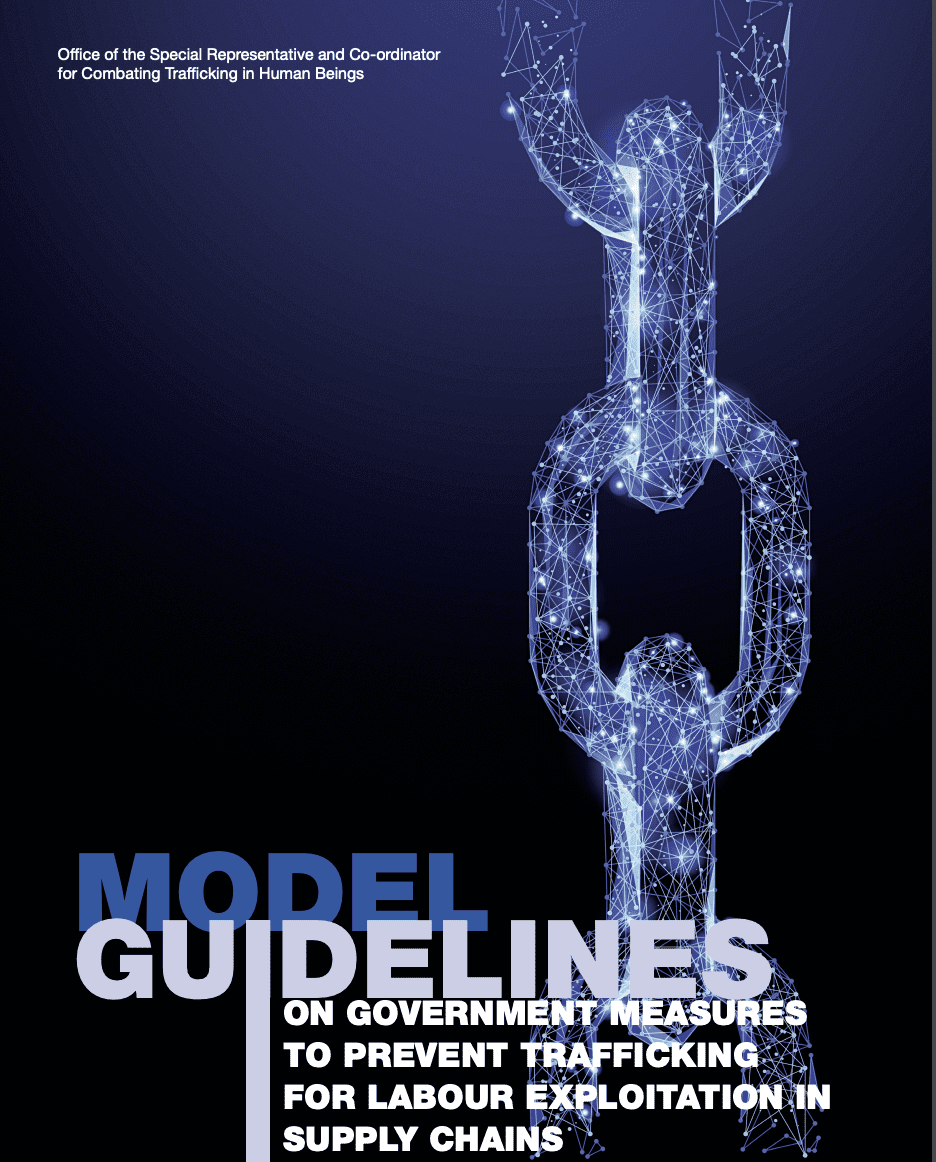
Model Guidelines on Government Measures to Prevent Trafficking for Labour Exploitation in Supply Chains
a. Background
Trafficking in human beings is a human rights abuse and a lucrative crime that can be found in the production of goods, and in the delivery of services we consume. Today’s globalized economy is characterized by complex supply chains, with goods, materials and labour sourced from all around the world. It can be difficult for buyers and consumers to be sure that the goods or services they purchase or procure were not produced by trafficked labour. Therefore, addressing this issue of trafficking in human beings in supply chains is an area of urgent concern.
A recent report by the International Trade Union Confederation (ITUC) indicates that just 50 companies with a combined revenue of 3.4 trillion USD may have a hidden workforce of 116 million people in their global supply chains. That is, according to the report, “The global supply chains of 50 companies employ only six percent of people in a direct employment relationship, yet rely on a hidden workforce of 94 percent”.12 Thus, while the economic power of these companies is staggering, the potential for labour abuse in the hidden workforce is also very high. The ILO estimates that at least some USD 150 billion of profits are made by forced labour, two thirds (USD 99 billion) by commercial sexual exploitation, while another USD 51 billion resulted from forced economic exploitation, including domestic work, agriculture and other economic activities.13
There has been a clear realization that business organizations as well as governments have responsibilities in the area of human rights. The significant development of the global movement against trafficking in human beings, forced labour and modern slavery has provided a further impetus for addressing the worst forms of exploitation in business supply chains. These risks may also be present in the goods and services that businesses provide to public authorities. Public procurement authorities are thus also recognizing the need for inclusion of social conditions, in line with societal expectations, in contracts with vendors for goods and services. Such measures expand a traditional “value for money” approach and recognize that companies that supply goods and services to public authorities, utilizing taxpayer funds, should be expected to uphold human rights related values in their operations. However, as is summarized in this paper, attaching such societal expectations to public procurement processes is complex and varies by jurisdiction across OSCE participating States.
Over the past decade, the Organization for Security and Co-operation in Europe, and its Office of the Special Representative and Co-ordinator for Combating Trafficking in Human Beings has taken an important lead in improving understanding of trafficking in human beings for labour exploitation, and of the measures required to prevent and combat it more effectively. The OSCE has adopted several Ministerial Decisions focused on these aspects of trafficking in human beings, which include the 2013 Addendum to the OSCE Action Plan to Combat Trafficking in Human Beings: One Decade Later, and its commitments pertaining to procurement for participating States as well as for the OSCE Executive Structures. Governments turn to the OSR/CTHB to provide assistance to them in implementing the Organization’s anti-trafficking political commitments. The Office has undertaken a number of projects as one of the ways to provide that assistance.
The OSR/CTHB developed a targeted project aimed at providing participating States with practical tools to enact concrete measures to prevent trafficking in human beings in supply chains, as well as build their capacity to implement these measures. Over 2016‑2017 the OSCE implemented the project, Prevention of Trafficking in Human Beings in Supply Chains through Government Practices and Measures, under which it has convened conferences, consultations and workshops with multiple stakeholders to raise awareness, build capacity, exchange practices, and to develop this guidance for participating States, business leaders and other advocates with the goal of preventing trafficking in human beings for labour exploitation in supply chains.
Taking the input gleaned through these various activities and additional research, this document summarizes how trafficking of human beings for labour exploitation (THB/LE) can be prevented through fair and ethical labour recruitment, public procurement reform and increased transparency in supply chains. It contains related model laws and clauses for OSCE participating States and provides recommendations on strategies to implement such measures. The guidance aims to assist OSCE participating States and Partners for Co-operation in developing and implementing appropriate legal and policy frameworks to address THB/LE in supply chains through government measures, with a focus on public procurement and transparency practices. The model guidelines presented contain a model law, including model clauses that cover public procurement, ethical labour recruitment, monitoring and evaluation, enforcement and supply chain transparency that are and can be used by OSCE participating States. Additional related resources can also be found in the Annex.
Read more here.
